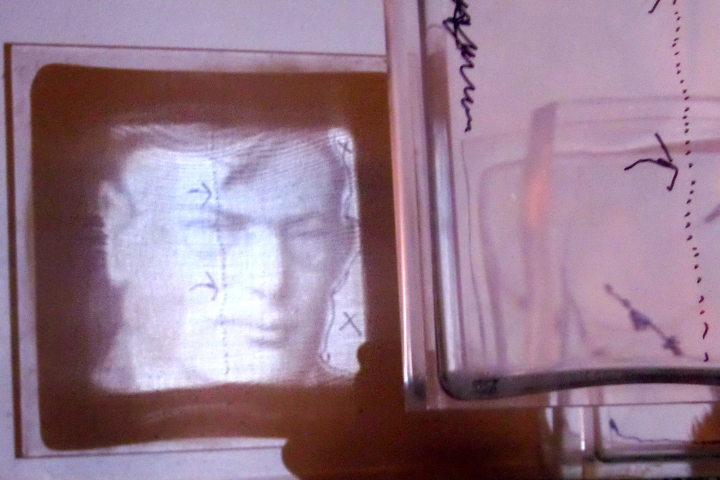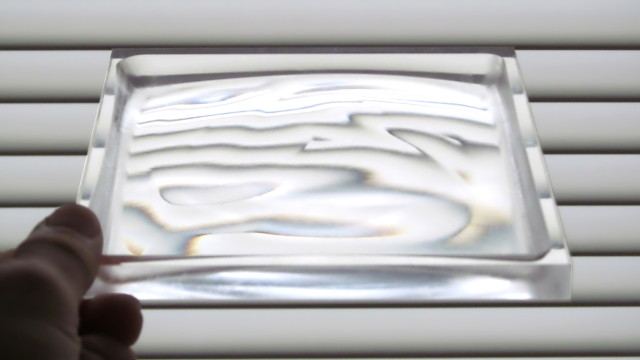

A lens design usually starts with a drawing or photo. Faces get digitally edited or redrawn to enliven the features, change the gaze and expression, rebalance light and dark, and improve the tone.

From the resulting image I calculate the shape of a few different lenses, each set to throw the image with a different amount of magnification, contrast, and dynamic range. I usually choose the deepest shape that can be cut into a lens blank.

The blank is cut on a robotic mill. Many subtleties enter into optimizing the cutting path: Any changes in the direction of motion, machine temperature, bit wear, coolant flow, and even nearby foot traffic can show up as unwanted artifacts in the lens.

The cut lens is usually within a few micron of the right shape, but not quite right and not quite transparent. After a cursory polish and inspection I selectively grind the surface to blur out machining artifacts.

Finally the lens is polished to optical clarity. Credit is due to the fellows at the local auto body shop who showed me that grinding and polishing could be done with auto finishing tools and grits.